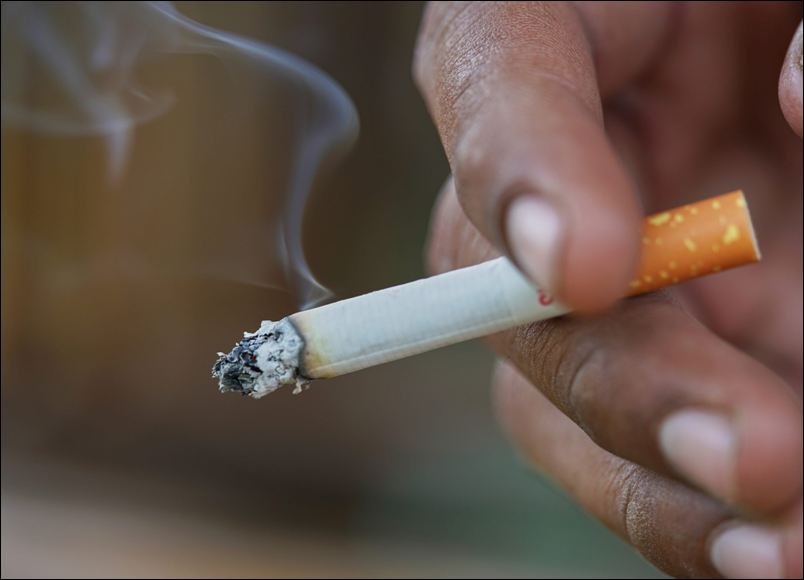Cigarettes are one of the most common causes of serious health problems worldwide. This is because cigarettes contain over 4,000 harmful substances. Many of these chemicals are toxic, and some cause cancer. Even smoking just one more cigarette can harm your health more than you might think. This article explains why these substances are so dangerous and why quitting smoking is the best choice for your body.
What Exactly Are Harmful Substances in Cigarettes?
Cigarettes are made from dried tobacco leaves. But the problem starts when you burn the cigarette. Burning tobacco releases thousands of chemicals, many of which are harmful to humans. Some of the major harmful substances include:
- Tar: A sticky, dark substance that coats your lungs.
- Nicotine: The addictive chemical that makes it hard to quit smoking.
- Carbon monoxide: A poisonous gas that reduces oxygen in your blood.
- Formaldehyde: Used to preserve dead bodies; it is a known carcinogen.
- Hydrogen cyanide: A deadly poison used in gas chambers.
- Arsenic: A toxic element found in pesticides.
Together, these substances cause major damage to your body and make smoking very harmful.

How These Harmful Substances Damage Your Body
When you inhale cigarette smoke, these chemicals enter your lungs and then your bloodstream. Here’s how they affect different parts of your body:
- Lungs: Tar and other chemicals damage the delicate lining of your lungs. This leads to coughing, difficulty breathing, and diseases like chronic bronchitis and emphysema.
- Heart: Nicotine and carbon monoxide raise your blood pressure and heart rate. They also damage blood vessels, increasing the risk of heart attacks and strokes.
- Blood: Carbon monoxide reduces oxygen in your blood, making it harder for your organs to work well.
- DNA: Some chemicals damage your DNA, which can cause cells to grow uncontrollably and develop into cancer.
- Immune System: Smoking weakens your body’s natural defense, making you more vulnerable to infections.
Even one cigarette exposes your body to these harmful effects.

Why Even One More Cigarette Is Too Many
Many smokers believe that having “just one more cigarette” won’t cause harm. However, science shows that every cigarette you smoke adds to the damage:
- Smoking causes immediate changes in your blood vessels, making them narrow and less flexible.
- Harmful chemicals trigger inflammation in your body, which is the first step towards many diseases.
- Even occasional smoking greatly increases the risk of heart disease and lung problems compared to not smoking at all.
- For people trying to quit, one cigarette can restart cravings and make quitting much harder.
This means “just one more” is already harmful, not harmless.
The Addiction Trap: Nicotine’s Role in Harmful Smoking
One reason people find it hard to stop smoking is nicotine addiction. Nicotine is a chemical that affects your brain quickly:
- It causes a release of dopamine, a feel-good chemical that creates pleasure.
- Your brain learns to expect nicotine regularly, causing cravings and withdrawal symptoms when you don’t get it.
- Addiction causes smokers to smoke more, increasing exposure to harmful substances.
Breaking nicotine addiction is key to reducing harm from smoking.
Common Diseases Caused by Smoking Harmful Substances

The many harmful substances in cigarettes lead to serious diseases that affect millions of people globally:
- Lung Cancer: Smoking causes about 85% of all lung cancer cases.
- Chronic Obstructive Pulmonary Disease (COPD): Long-term smoking leads to COPD, which makes it very hard to breathe.
- Heart Disease: Chemicals damage arteries, leading to heart attacks.
- Stroke: Smoking triples the risk of stroke due to clogged blood vessels.
- Respiratory Infections: Smoking weakens the lungs’ defenses, increasing the chance of pneumonia and bronchitis.
- Other Cancers: Smoking also causes cancers of the mouth, throat, esophagus, bladder, kidney, and pancreas.
Even low levels of smoking increase the risk of these diseases.
What Are the Effects of Smoking “Light” or “Filtered” Cigarettes?
Some people believe “light” or “filtered” cigarettes are safer. But this is not true:
- These cigarettes still contain high levels of harmful substances.
- Smokers tend to inhale more deeply or smoke more cigarettes to satisfy their nicotine cravings, increasing damage.
- There is no safe cigarette — all carry serious health risks.
Quitting Smoking: How You Can Reduce Harmful Effects
The best way to avoid the harmful substances in cigarettes is to quit smoking completely. If quitting feels difficult, here are ways to help reduce your risks:
- Avoid triggers: Stay away from places or situations that make you want to smoke.
- Use Nicotine Replacement Therapy (NRT): Patches, gum, or lozenges can reduce cravings.
- Seek Support: Talk to healthcare providers, join support groups, or use quitlines.
- Create a Quit Plan: Set a quit date and prepare strategies to handle cravings.
- Stay Active: Exercise and hobbies can distract you from smoking urges.
Even reducing the number of cigarettes you smoke daily lowers your exposure to harmful chemicals.
The Health Benefits of Quitting Smoking
Quitting smoking brings both quick and long-term health improvements:
- Within 20 minutes: Your heart rate and blood pressure start to return to normal.
- After 12 hours: Carbon monoxide levels in your blood drop to normal.
- Within weeks: Lung function and circulation improve.
- After 1 year: Your risk of heart disease drops by half compared to a smoker.
- After 10 years: Your risk of lung cancer drops to about half that of a smoker.
Your body has a strong ability to heal itself when you quit.
How Public Awareness and Laws Help Reduce Smoking

Governments and health organizations have taken strong steps to reduce smoking worldwide:
- Public campaigns educate about the dangers of harmful substances in cigarettes.
- Smoking bans in public places protect non-smokers from secondhand smoke.
- High taxes on cigarettes make smoking more expensive and discourage use.
- Warning labels on cigarette packs inform users about risks.
These efforts help people understand the risks and encourage quitting.
Personal Stories: The Real Impact of Harmful Substances
Many people who quit smoking share stories of health improvements:
- A former smoker described how quitting stopped their constant coughing and gave them more energy.
- Another said quitting helped lower their blood pressure and improved their heart health.
- Some tell how quitting helped them avoid serious diseases that run in their families.
These real-life stories show that quitting is possible and life-changing.
Final Thoughts: Why Every Cigarette Counts
Knowing about the harmful substances in cigarettes should make it clear why even “just one more cigarette” can be dangerous. Each cigarette exposes your body to toxic chemicals that cause addiction, damage organs, and increase the risk of deadly diseases.
Choosing to quit smoking is one of the best decisions you can make for your health. The sooner you quit, the sooner your body can start to heal. Help and support are available, and every step you take toward quitting reduces your exposure to harmful substances.
Remember, there is no safe level of smoking. Protect yourself and those around you by quitting today.
Read More: Top Dubai Budget-Friendly Night Experiences This Weekend














